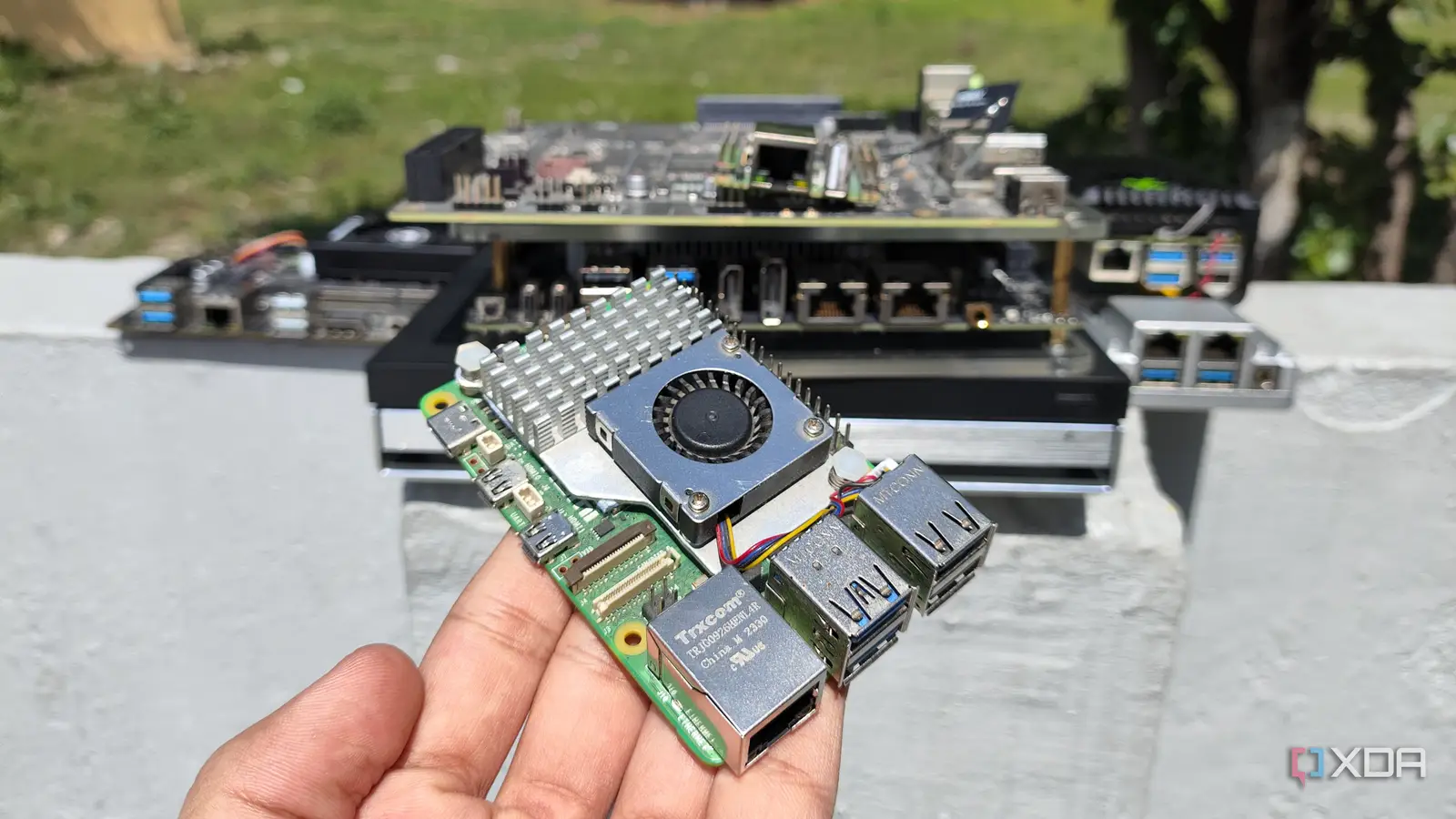
A Raspberry Pi makes an excellent entry point into home server projects. While it won’t replace a full-blown server or NAS in raw power, it’s versatile enough to handle a surprising range of services. With a small footprint, low energy usage, and strong community support, the Pi can be the heart of a self-hosted setup that’s both fun and practical.
Hosting your own media library
Stream music and videos from your personal collection
One of the most popular uses for a Raspberry Pi as a home server is setting up a media library. Tools like Jellyfin, Plex, or Emby let you organize and stream your collection of movies, TV shows, and music to any device on your network. With hardware acceleration on older Pi models, performance is solid, and even on the Pi 5, software decoding works well for most use cases. This flexibility makes the Pi an affordable alternative to buying a dedicated streaming box.
Running your own media server also gives you freedom from subscription services. You can tag, organize, and customize your setup exactly the way you like, without relying on cloud-hosted alternatives. A Pi-powered server can handle multiple users on the same network, so your household can enjoy different streams at once. It also means you don’t have to worry about losing access if a streaming platform changes its catalog.
If you’re willing to dig deeper, you can expand into advanced features like transcoding, metadata fetching, and external access through a VPN. This lets you watch your media even when you’re away from home, turning the Pi into a compact yet capable streaming hub. For tinkerers, experimenting with add-ons and plug-ins adds another layer of customization. It’s a project that scales nicely with your curiosity and storage space.
Running a file server or personal cloud
Store, sync, and back up your files locally
Using a Raspberry Pi as a file server is a straightforward way to get more out of the hardware. With tools like Samba or NFS, you can share storage across your local network for easy file access. If you prefer a cloud-like experience, software such as Nextcloud or Seafile allows you to sync files, share folders, and manage backups securely. A Pi with an external drive attached can mimic many of the features of a commercial NAS.
This approach gives you more control compared to commercial cloud providers. You decide how your data is stored and who can access it, rather than depending on third-party services. For households with multiple devices, having a Pi-based file server also makes sharing and collaborating on files a lot more seamless. It can even serve as a family backup solution, with scheduled syncs to protect important documents and photos.
A Pi with an external SSD or HDD can offer decent performance for personal use. While it won’t compete with enterprise-grade NAS devices, it’s more than enough for storing documents, photos, and personal projects. The lower power usage makes it cost-effective for 24/7 operation, so you can keep it running without worrying about energy bills. Over time, you can even expand the setup by adding larger drives or integrating with other services.
Running network-wide ad blocking
Protect your devices with a DNS-level filter
Another great role for a Raspberry Pi is handling DNS-based ad blocking. Pi-hole is the most popular software for this purpose, and it runs perfectly on Pi hardware. Once set up, it filters out ads, trackers, and malicious domains before they ever reach your devices. This has the side benefit of speeding up page loads by reducing the number of requests made to advertising servers.
The real advantage is that it works across your entire network. Phones, tablets, smart TVs, and even IoT devices gain protection without requiring individual apps to be installed. Families especially appreciate this because it means younger users get a safer browsing experience without extra setup. Once in place, the system is mostly hands-off, requiring only occasional updates.
By combining Pi-hole with Unbound, you can also enhance privacy by resolving DNS queries directly. This reduces reliance on third-party DNS providers, giving you more control over how your network handles requests. The pairing also adds a layer of resilience, since you’re less affected by outages or filtering from outside providers. It’s a simple upgrade that quietly improves both performance and security.
Self-hosting websites and web apps
Run blogs, dashboards, or small web services
A Raspberry Pi is well-suited for hosting small websites or personal web applications. You can install a LAMP or LEMP stack to serve static sites, blogs, or wikis. Lightweight CMS platforms, such as WordPress or Ghost, run without much trouble on Pi hardware. This makes it a great testing ground for learning about hosting without risking high costs.
Beyond traditional websites, the Pi is excellent for self-hosted web apps. Home dashboards, monitoring tools, and project management platforms can all be deployed. For developers, it’s also a reliable test environment that mimics a real-world server environment. You get hands-on experience with deployment, configuration, and troubleshooting in a low-stakes way.
Running web apps locally offers privacy and control. It reduces reliance on external services, which appeals to hobbyists who value self-hosting. With Docker support on the Pi, you can spin up and manage containers easily, giving you the flexibility to run multiple services side by side. Once you’ve set it up, it can become the backbone of your digital workspace.
Monitoring your smart home or servers
Keep an eye on uptime and automation systems
For home automation enthusiasts, the Pi can act as a central monitoring server. Software like Home Assistant runs smoothly on a Pi and allows you to integrate and control smart devices from one dashboard. You can track lights, sensors, thermostats, and even automate routines. The setup is approachable for beginners yet powerful enough for advanced users.
Another use case is service monitoring. Tools such as Uptime Kuma or Grafana let you keep track of server uptime, network performance, and system metrics. With these tools, you can spot issues quickly and keep your home lab or small self-hosted projects running smoothly. The Pi provides enough power to keep dashboards updated and responsive without overwhelming its hardware limits.
Because the Pi runs quietly and efficiently, it’s perfect for always-on monitoring tasks. You can leave it running in the background, gathering logs, displaying graphs, and sending notifications when an issue occurs. It’s an understated but handy way to put a Raspberry Pi to work. For many, this is the first step into creating a more reliable and self-sufficient home network.
A compact and capable server companion
A Raspberry Pi won’t replace a rack-mounted enterprise server, but it doesn’t need to. Its charm lies in being affordable, energy-efficient, and versatile enough to cover a wide range of home server needs. Whether you’re streaming movies, blocking ads, or running your own cloud, a Pi can fit right in as the backbone of your self-hosted projects.



